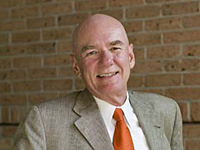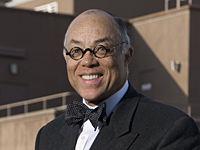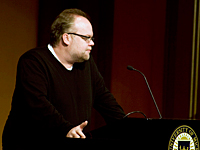July 12, 2010
As campuses prep for the fall semester, some top architecture schools are experiencing turnovers among their high-level staff. Deans and other administrators have stepped down, or announced plans to, at the Art Institute of Chicago, the University of Maryland, the Cooper Union, the Massachusetts Institute of Technology (M.I.T.), the University of Michigan, and the University of California, Berkeley.
Ever year brings a changing of the guard at one school or another, so these recent departures don’t indicate the sky is falling. But, they do highlight a trend: Tenures, in general, are shortening, which may be the result of burnout, according to some faculty members.
Indeed, unlike a few decades ago, when deans could focus solely on being administrators, today’s leaders often juggle various tasks like fundraising and teaching, and that multitasking can be stressful, says Thomas Fisher, president of the Association of Collegiate Schools of Architecture, a 127-member trade group that Fisher headed until July 1, when his voluntary one-year term expired. (Succeeding him is Daniel Friedman, dean of the College of Built Environments at the University of Washington.)
Fisher, who has served as dean of the University of Minnesota’s College of Design for 14 years, says leading a school “can be a grueling, relentless job because we’re pulled in so many directions. But, the faster turnover also stems from “the hyperspeed of our culture. Everybody expects everything to happen at a faster rate.”
|
Art Institute of Chicago
One of the shortest tenures in recent history may be that of Wellington “Duke” Reiter, who was president of the School of Art Institute of Chicago for just two years. In contrast, Reiter’s predecessor, Toby Jones, was president for 18.
In his brief but active time at the 3,000-student school, Reiter made decisions that did ruffle feathers, such as creating a provost position for greater oversight and reaching out to corporations for financial support, he says. “Some people like change, and some people think change is threatening,” says Reiter, adding that he and administrators “came to a mutual agreement” about his departure.
Next up, Reiter hopes to launch his own school, after having taught at or led existing schools for more than two decades, including being dean of the College of Design at Arizona State University.
Aimed at teaching business skills to those with architecture degrees—a modified M.B.A. program for designers—Reiter’s new school would also be somewhat virtual. Students would attend classes for a few weeks in the fall and spring on local campuses but also throughout the year in the boardrooms of large architecture firms, to whom Reiter is now promoting his idea. “Let’s just say there is interest,” he says.
In the meantime, a four-member transition team will lead the school at the Art Institute until a full-time replacement is found, a spokeswoman said.
|
University of Maryland
Change has also come to the University of Maryland’s School of Architecture, Planning and Preservation, where Garth Rockcastle has stepped down from the deanship by choice after six years in order to “invigorate” the institution, said a spokeswoman, who added that the adaptive reuse specialist will take a fall sabbatical before returning to teaching at Maryland in 2011.
Replacing him is David Cronrath, who started July 1 after a six-year stint at Louisiana State University’s College of Art and Design. While in Louisiana, Cronrath advocated for the shutdown of Mississippi River-Gulf Outlet Canal, or “MR-GO,” which was blamed for intensifying damage from Hurricane Katrina; it closed last year. Similarly, in Maryland, Cronrath plans to fight coastal erosion, along the Chesapeake Bay, whose banks are depleted of vital silt, he explains.
“The 20th century gave us great abundance, but it also produced new problems,” like climate change, which needs to be addressed, Cronrath said.
|
Cooper Union
A primary mission of the Cooper Union in Manhattan, on the other hand, has been to boost the endowment of the school, which pays the tuition of all 1,000 of its students.
And president George Campbell, Jr., who will step down in May 2011 after a decade on the job, met the challenge head-on, increasing endowment from $100 million in 2001 to $600 million today. To do so, Campbell leased two Cooper-owned parcels to developers: 435 Lafayette Street is now a green-glass condo by Gwathmey Siegel, and 51 Astor Place is set to add a Fumihiko Maki-designed office building.
Perhaps the most notable aspect of Campbell’s legacy, however, is 41 Cooper Square, an 11-level classroom, studio and lab building by Thom Mayne/Morphosis that’s been praised for its architecture, which features a perforated metal skin. “We wanted to stimulate the imaginations of our creative young people, and I think the building does that,” said Campbell, a trained physicist. His successor has yet to be found.
|
Massachusetts Institute of Technology
The architecture department at M.I.T. has a new head, too: Nader Tehrani, a current teacher at the university, replaces Yung Ho Chang, who wrapped up a five-year term this spring.
Tehrani, who will occupy the number-two slot behind dean Adèle Naudé Santos, will serve for four years, during which time he expects to help transform the curricula and organize exhibitions. Tehrani will also raise funds, which may cut into his teaching, though, he joked, “I’ve taught for 20 straight years and never had a sabbatical.”
Chang, meanwhile, will take a yearlong sabbatical, as per university policy, and resume teaching design studios with a focus on urbanism in China when he returns.
|
University of Michigan
At the Taubman College of Architecture and Urban Planning at the University of Michigan, meanwhile, John McMorrough is poised to become chair for a four-year term. A search committee selected him this spring, though the school’s regents won’t vote to confirm him until July 15.
McMorrough replaces Tom Buresh, who served two back-to-back four-year terms and is now headed to the University of California, Berkeley.
McMorrough comes to Michigan from Ohio State’s Austin E. Knowlton School of Architecture, where he had been “section head,” or the second-in-command, for five years. He hopes to get students talking about ways they might use design to tackle global problems, he says. “I want to create a more worldly engagement for architecture in general,” says McMorrough, who will continue to be a principal of studioAPT in Columbus, Ohio.
|
University of California, Berkeley
On July 1, Tom Buresh, the former Michigan head, became the chair of Berkeley’s Department of Architecture, which has a total of 1,000 undergrad and graduate students.
Burseh replaced Gail Brager, who had served as interim chair since Mary Comerio’s stepping down in 2009 after a three-year stint. For Buresh, personnel changes are a positive sign. “I think it’s a good thing for schools to turn over every 5 to 10 years,” he says.
In its hiring, the university broke some new ground—Buresh is the first person to lead Berkeley’s architecture program who wasn’t formerly a professor there. He attributes that casting of a wider net to the school’s desire for a more diverse faculty.










Post a comment to this article
Report Abusive Comment